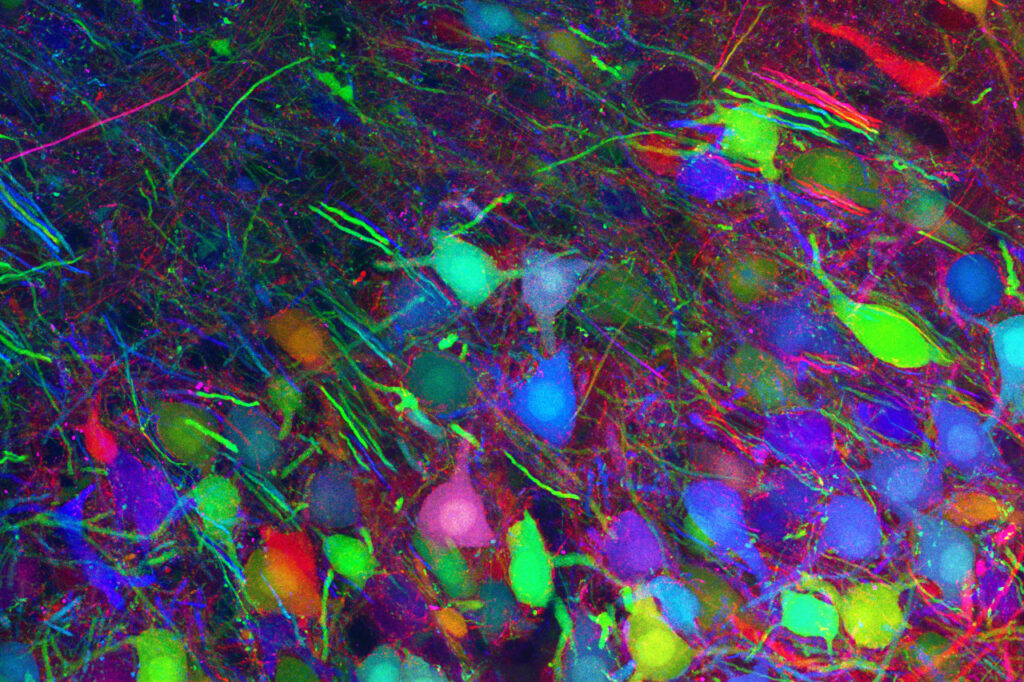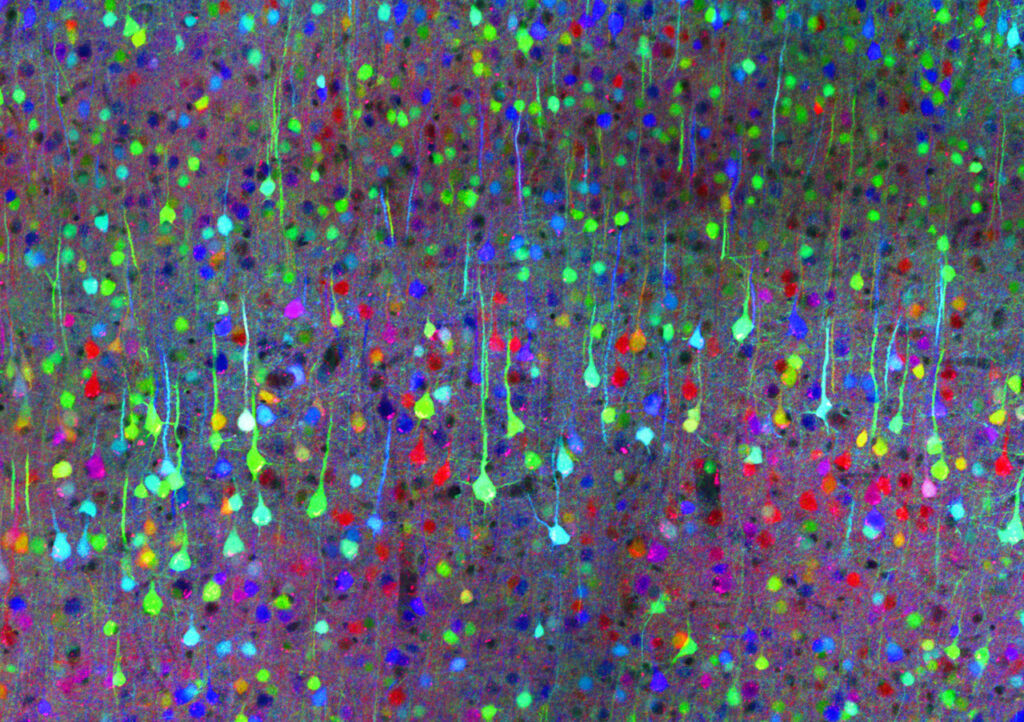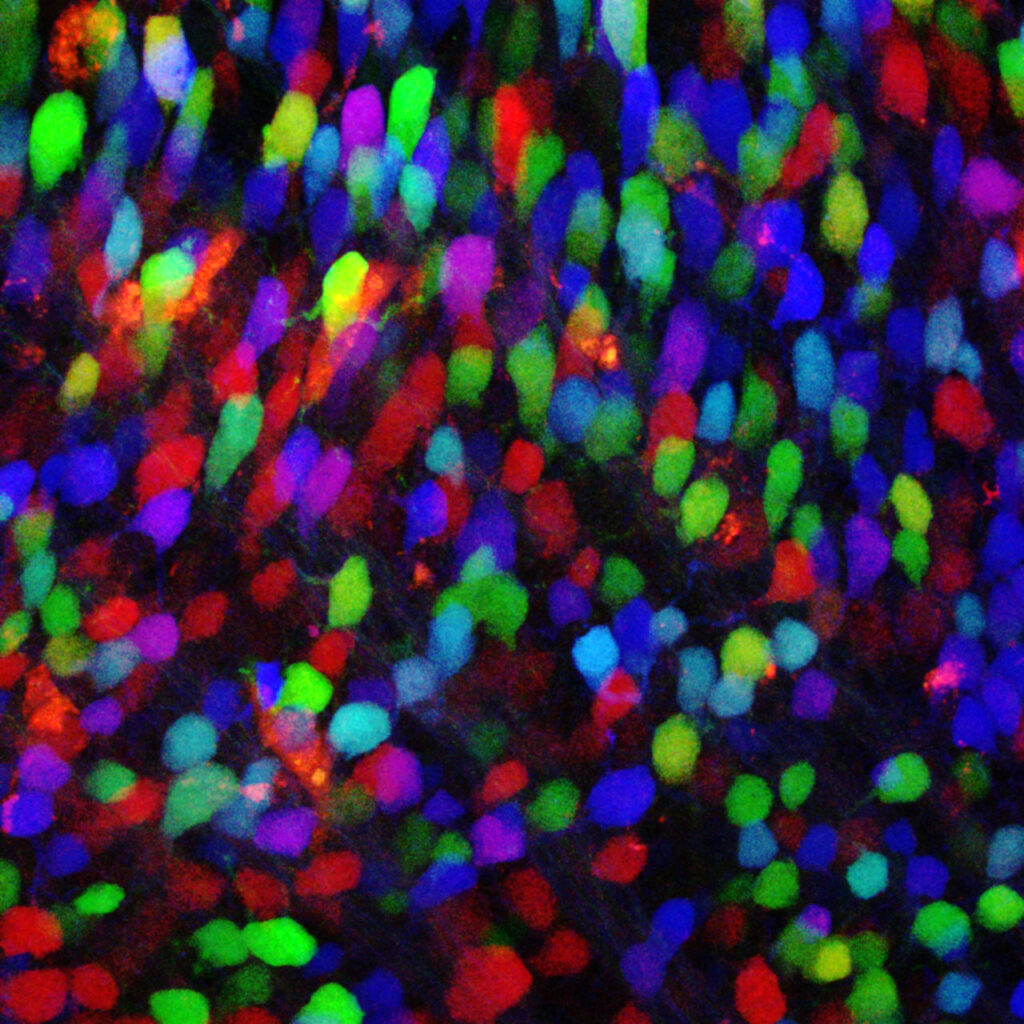[LUM#3] Shadows and lights of consciousness
What goes on in our brains? Even today, it's hard to say. Among the mysteries that remain, there is a Holy Grail: the enigma of consciousness...

For a long time, the brain was an absolute mystery. Walled in by its impenetrability, the brain was described from the outside. How do we behave? How do we speak? How do these data shed light on brain mechanisms? Over the past few decades, technological advances, notably in medical imaging, have begun to shed light on the inside of the black box. But the mystery is stubborn...
An organ like any other?
" We understand more or less how a liver or kidney works; even if there's still a lot to learn, the concepts are there. The functioning of the motor, vascular and digestive systems is more or less mastered. "Just about", says neurobiologist Joël Bockaert, founder of the Institut de Génomique Fonctionnelle. Total understanding often remains a shoreline that gets further and further away the closer we get to it.
Understanding the brain? Wouldn't that mean, among other things, understanding how we manufacture the immaterial with the material: consciousness and thought with nerve cells? For the brain is indeed an organ. As such, it is subject to metabolic and genetic determinations: " autism and schizophrenia seem to have a strong genetic component ", continues the neurobiologist.
But it's an organ of staggering complexity. As proof, when it comes to repairing this subtle mechanism, we turn out to be very poor watchmakers...". Even today, when it comes to virtually all cerebral diseases, we practitioners are still at a loss. We can relieve patients, but not cure them," asserts Gina Devau.
Eternal impermanence
However, this neurobiologist specializing in Alzheimer's disease has some excellent news: " Your brain ages well! It has remarkable plasticity and incredible resilience. In the event of damage, it knows how to reorganize itself in order to recover all or part of the faculties it has lost.
And all it needs to develop is activity. Because our brain structures wear out, especially if we don't use them. " The brain is constantly changing and re-transforming itself, throughout life. It is capable of creating new connections if called upon," says Gina Devau. If there's one thing that characterizes our brain, it's its impermanence. Every second transforms it. So much so, according to scientists, that you won't be the same after reading this article...
So where does my identity lie? Far from the unconscious described intuitively by Freud, advances in science today allow us to imagine an unconscious that is perhaps more omnipresent than the father of psychoanalysis imagined. " It's one of the most important discoveries of recent decades: the brain functions massively unconsciously," posits Joël Bockaert...
Who is I?
And scientists describe a brain that doesn't need us to accomplish the vast majority of the tasks it's responsible for. Managing physiological functions such as breathing and controlling the heart; juggling motor and sensory coordination, as when riding a bike or playing the guitar: my brain carries out these complex tasks on its own. In other words, without me.
" It's an organ that works ultra-fast: in milliseconds. It's a task that escapes the conscious mind, for which the basic tempo is the second," says Gina Devau. The same applies to speech: " when we speak, it's at such a speed that our discourse clearly doesn't have time to pass through the filter of consciousness ", confirms Joël Bockaert. But then, who is this I who speaks? I is another " said Rimbaud: poets, inventors of the unknown, were the first to express this astonishment at the mystery of consciousness.
Consciousness is therefore just the tip of an iceberg, in the depths of which most decisions are made without our knowledge. What happens when it emerges? The fireworks can be described, but not explained. " Everything ignites and synchronizes in the prefrontal cortex. This is the main seat of consciousness: it activates and manages most of the brain's functions," describes Joël Bockaert. This state, which allows you to focus your attention on a single, punctual event, doesn't last. The brain then takes the helm again, as a discreet despot...
The traces that shape us
If there's one thing I rely on, it's my memory, that major pillar in the construction of identity. " Our memories open a window on the past, but also on the future. They are what allow us to move forward," says Gina Devau. It's our knowledge of places, past situations and existing relationships that enables us to adapt in advance to what we project into the future. " There is no imagination without memory: the same regions of the brain are involved," explains Joël Bockaert.
We have a few insights into how memory works. " When a memory is formed, the contacts between certain neurons strengthen to produce a pattern, a particular form. Networks are created, which will strengthen or disappear if they are, or are not, called upon. Memories are literally imprinted on us. They are physical traces: this begins to reduce the central mystery of "how can you make the immaterial out of the material? ..... and vice versa. As the American neurologist Antonio Damasio writes, Spinoza may well have been right: for the philosopher, " body and mind are the same thing, seen from two different angles ".
These physical traces that populate our memory are themselves subject to the law of impermanence. For our memories are constantly changing. The patterns of the networks that make them up will evolve and be reconstructed. Today, we are well aware of the fragility of memory. We know that it deceives us: the brain reconstructs memories, recoding them differently each time it brings them to consciousness, subjecting them to multiple challenges that modify them.
A brain can be very deceiving
Memory is thus subject to emotions. Isabelle Chaudieu is a neurobiologist working on post-traumatic stress disorder. Normally, our memory is created during sleep, when the hippocampus redistributes memories to various areas of the brain for long-term storage. In the event of extreme stress, the hippocampus can no longer do its job. " The prefrontal cortex, which is supposed to regulate emotions, is overheated. It can no longer play its role.
A rapid response system then takes over, known as the subthalamic system. A state in which emotions take over from the rational brain...". Bringing emotions under control is one of the major functions of the brain's higher systems. Virtually all psychiatric illnesses are linked to a fundamental imbalance in the prefrontal cortex," explains Isabelle Chaudieu.
But even when it's in perfect working order, our brains routinely deceive us. This enchanter is a master in the art of phantasmagoria. Optical illusions, for example, are proof of this. " The brain erases, creates, reconstitutes, recomposes and invents forms. It can even forge fictitious memories," sums up Joël Bockaert.
An enchanter that will be long and arduous to capture under the eye of science. Gina Devau explains: "It's a long road ahead, requiring the combined input of many disciplines. " Clinical studies, behavioral studies, medical imaging, computer simulation, genetics... Each discipline brings a small opening. The picture is still too vast to embrace in a single glance ".

using the Brainbow technique.
© Inserm/Fouquet, Stéphane

© Inserm/Loulier, Karine
UM podcasts are now available on your favorite platforms (Spotify, Deezer, Apple podcasts, Amazon Music...).